F-4 Phantom II Design, History, Deployment & Photographs
F-4 Phantom II Development History
In 1953, McDonnell Aircraft began work on revising its F3H Demon naval fighter plane, seeking expanded capabilities and better performance. In September of 1953, McDonnell approached the U.S. Navy with a proposal for the "Super Demon". Subsequently, the McDonnell design was reworked into an all-weather fighter-bomber.
In July of 1955, the Navy ordered two XF4H-1 prototype test aircraft, and five YF4H-1 pre-production fighter planes. The Phantom made its maiden flight on May 27, 1958. The airplane entered service in 1961.
The Phantom was first used by the U.S. Navy as an interceptor but also was capable of flying as a ground-support bomber for the U.S. Marine Corps. The aircraft flew every traditional military mission: air superiority, close air support, interception, air defense suppression, long-range strike, fleet defense, attack and reconnaissance.
The USAF F-110A Spectre
The U.S. Air Force received Phantoms as the result of Defense Secretary Robert McNamara's push to create a unified fighter for all branches of the military. The USAF began accepting deliveries of its F4C version (originally called the F-110A Spectre) in 1963.
U.S. Air Force F-110A Spectre Serial Number 49405 (USAF Photo) |
 |
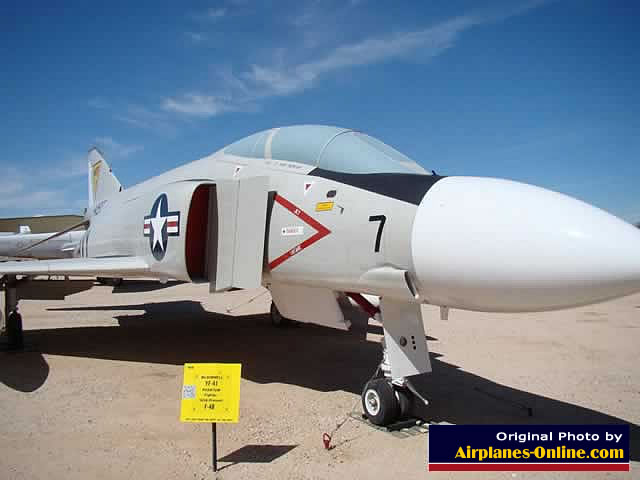 U.S. Navy McDonnell-Douglas YF-4J Phantom II, 151497, in Tucson |
The F-4D, with major changes that increased accuracy in weapons delivery, was delivered to the USAF in 1966, the Air National Guard in 1977, and the Air Force Reserve in 1980.
F-4 Phantom Performance
The two-place, twin-engine, all-weather supersonic F-4 Phantom II flew at Mach 2 (twice the speed of sound), and could carry a payload of up to 16,000 pounds of bombs, rockets, missiles and guns. Each aircraft had 54,197 feet of wiring and 643,000 fasteners holding it together.
In air combat, the Phantom's greatest advantage was its thrust, which permitted a skilled pilot to engage and disengage from the fight at will.
The aircraft could perform tactical air roles such as air superiority, interdiction and close air support, as it did in Southeast Asia.
The Phantom was the first multi-service aircraft, flying concurrently with the U.S. Navy, Air Force and Marine Corps. It is the first and only aircraft ever to be flown concurrently by both the Blue Angels and the Thunderbirds.
F-4 Phantom Specifications
 McDonnell-Douglas F-4D Phantom II, Tail Code LF, S/N 66-8812 |
Engines: Two General Electric J-79-GE-15s of 17,000 lbs. thrust each
Maximum speed: 1,400 mph
Cruising speed: 590 mph
Range: 1,750 miles
Ceiling: 59,600 ft.
Span: 38 ft. 5 in. (27 ft. 6 in. folded)
Length: 58 ft. 2 in.
Height: 16 ft. 6 in.
Weight: 58,000 lbs. loaded
F-4 Phantom Production Statistics
From 1958 to 1979, when the production line stopped, a total of 5,195 F-4 Phantom II aircraft were built. Of those, 5,057 rolled off the McDonnell Aircraft (later McDonnell Douglas) production line in St. Louis, MO.
The last 138 planes were built under license by Mitsubishi Aircraft Co. in Japan.
Of the 5,057 airplanes built in the United States, the U.S. Air Force took delivery of 2,874 aircraft; the Navy and Marine Corps, 1,264; and international customers, a combined total of 919 planes.
The Phantom still holds the record for the largest production run of any supersonic fighter built in the United States.
The F-4 Phantom II aircraft, which still flies in defense of 8 nations, was retired in 1996 from U.S. military forces, ending a record-studded 38-year career.
The Last F-4 Phantom Leaves Davis-Monthan AMARG in April, 2013
The final F-4 regenerated from storage at the 309th Aerospace Maintenance and Regeneration Group performed its last flight over Tucson, Arizonza on April 17, 2013, before flying to Mojave, California.
Tail number 68-0599, an RF-4C Phantom, arrived at AMARG for storage on January 18, 1989 and had not flown since. The jet's assigned call sign was "Last One."
AMARG's technicians re-installed hundreds of parts and performed thousands of hours of maintenance to return the fighter to flyable status. This aircraft represents the 316th F-4 withdrawn from storage in support of Air Combat Command's full-scale aerial target program.
BAE Systems will convert the aircraft into a QRF-4C drone, and then deliver it to the 82nd Aerial Targets Squadron at Tyndall Air Force Base, Florida.
Original F-4 Phantom II Photos
McDonnell-Douglas F-4C Phantom II S/N 64-0673
, Tail Code FG, at the Pima Air & Space Museum in Tucson, AZ |
 |
McDonnell-Douglas F-4E Phantom II S/N 66-0329 in USAF Thunderbird
markings, Pima Air Museum, Tucson |
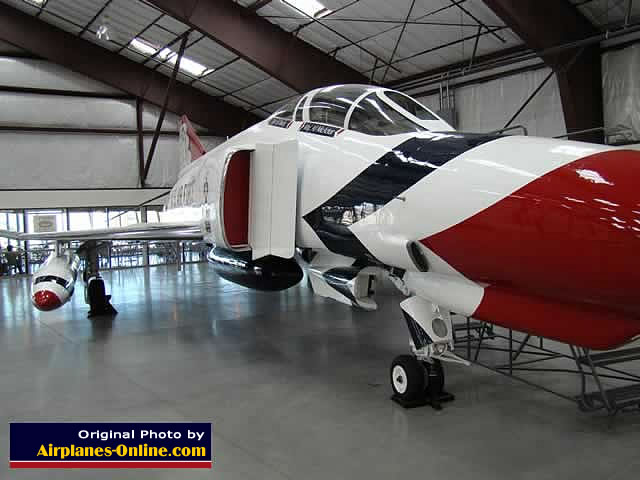 |
McDonnell-Douglas F-4D Phantom II S/N 66-8812 Delivered March 1968, retired from service March 1988, HAMM, Tyler, Texas |
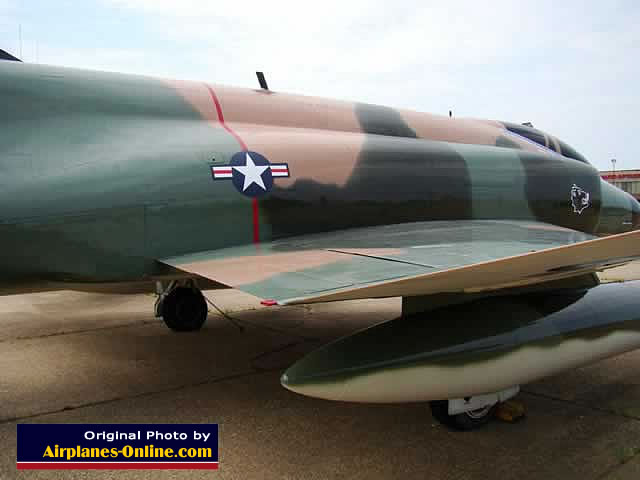 |
McDonnell-Douglas F-4D Phantom II S/N 66-8812 with Tail Code LF |
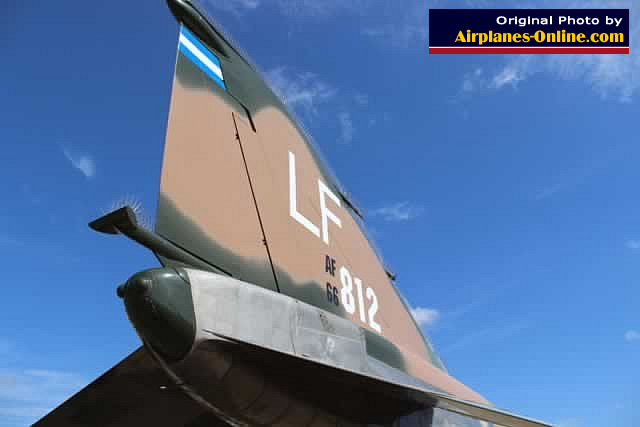 |
F-4D Phantom II S/N 66-7518
at the Charles B. Hall Airpark near the
entrance to Tinker Air Force Base, Oklahoma City, Oklahoma |
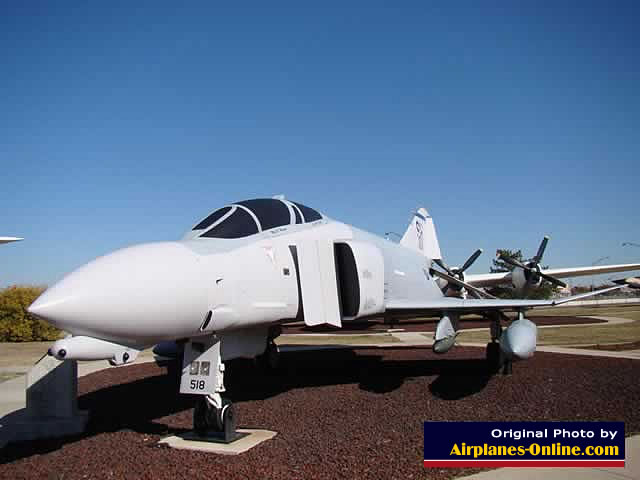 |
Front nose view of F-4D Phantom II S/N 66-7518
at the Charles B. Hall Airpark |
 |
Air intake area of F-4D Phantom II S/N 66-7518, Tinker Air Force Base, Oklahoma City, Oklahoma |
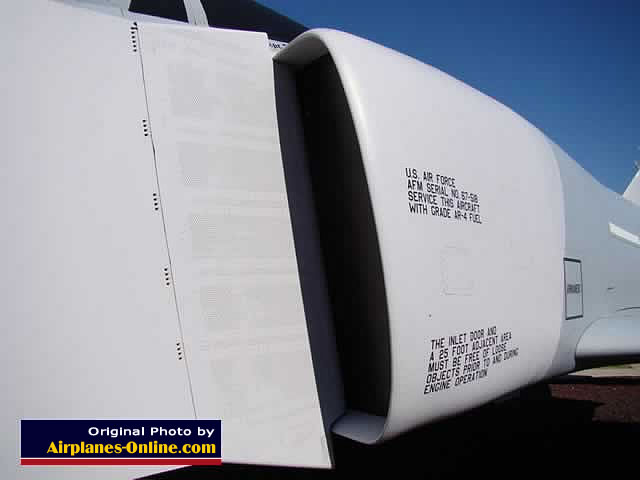 |
Tail section of F-4D Phantom II S/N 66-7518, Tail Code SH, Charles B. Hall Airpark |
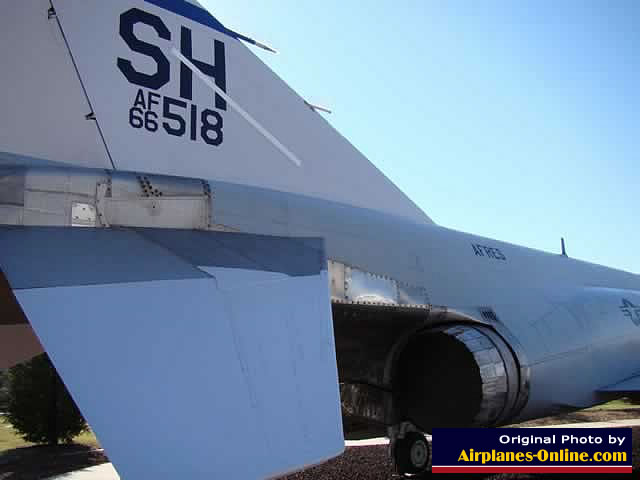 |
Tail section of McDonnell-Douglas F-4C Phantom II, 63-7424, Tail Code MO, at the Hill Aerospace Museum in Utah |
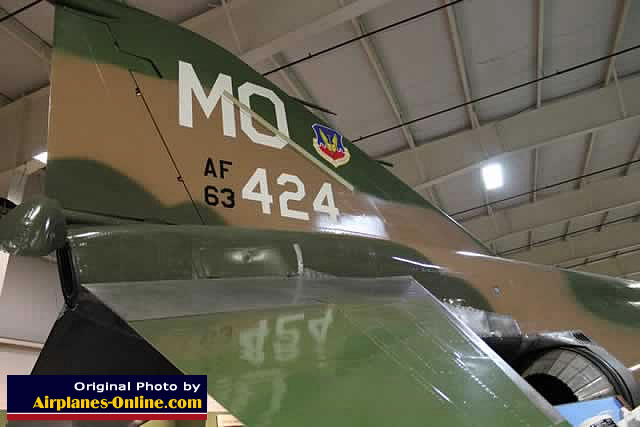 |
McDonnell-Douglas F-4C Phantom II, 64-0664, Hill AFB |
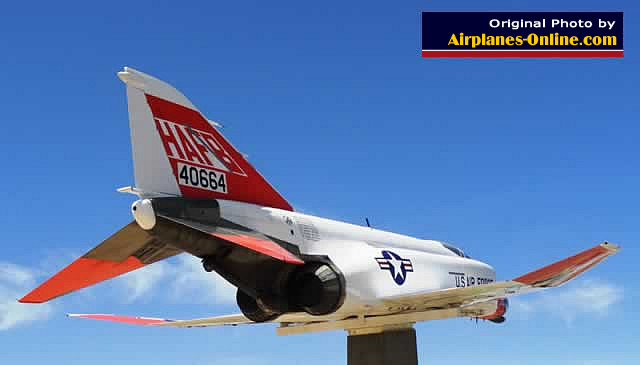 |
McDonnell-Douglas F-4C Phantom II, 66-0469, Hill Aerospace Museum near Salt Lake City |
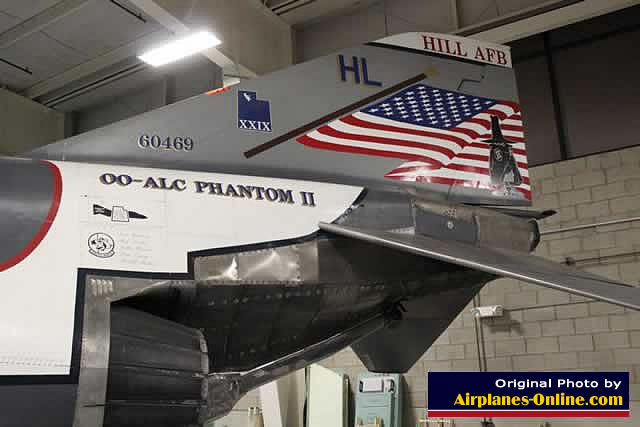 |
Tailhook of F-4 Phantom at Eglin AFB, Florida |
 |
F-4D Phantom II, Serial Number 66-7554, Museum of Aviation, Robins Air Force Base, Georgia |
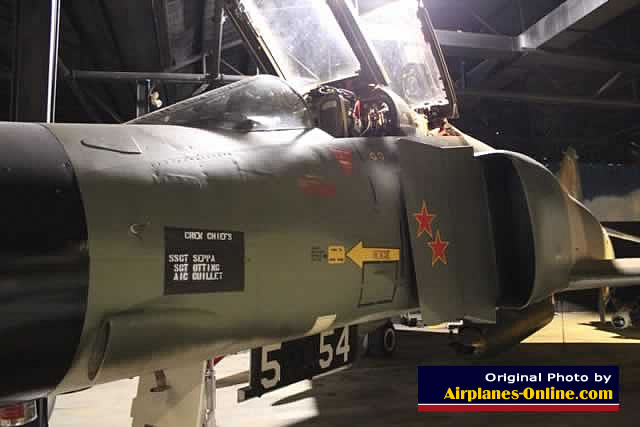 |
U. S. Navy F-4 Phantom II 152986 from the USS Coral Sea at the Wedell-Williams Aviation Museum, Patterson, Louisiana |
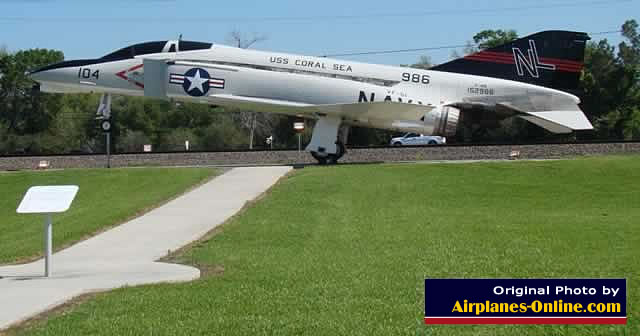 |
F-4 Phantom II Photographs by Our Friends and Supporters
| RF-4E Phantom II of the Hellenic Air Force - Last exercice with Dassault Mirage F1 (Photos by DELEHELLE Eric) |
|
 |
 |
F-4 Phantom II S/N 64905, Tail Code FC, at Eielson Air Force Base near Fairbanks, Alaska (photo by Michael Hoschouer) |
 |
F-4 Phantom II at Joint Base Elmendorf-Richardson in Anchorage, Alaska (photo by Michael Hoschouer) |
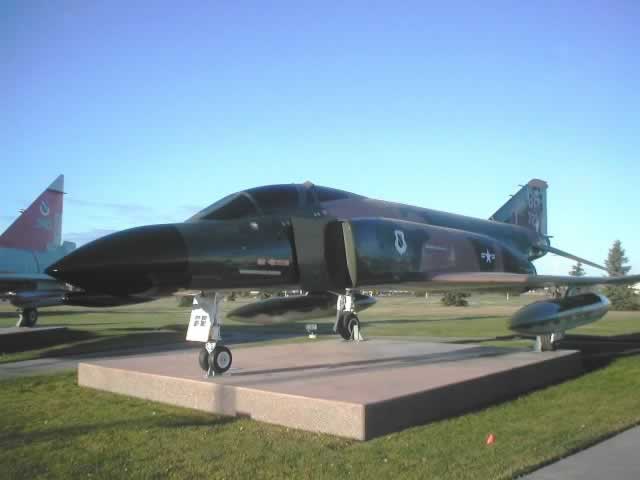 |
F-4G Phantom II at Joint Base Elmendorf-Richardson in Anchorage, Alaska (photo by Michael Hoschouer) |
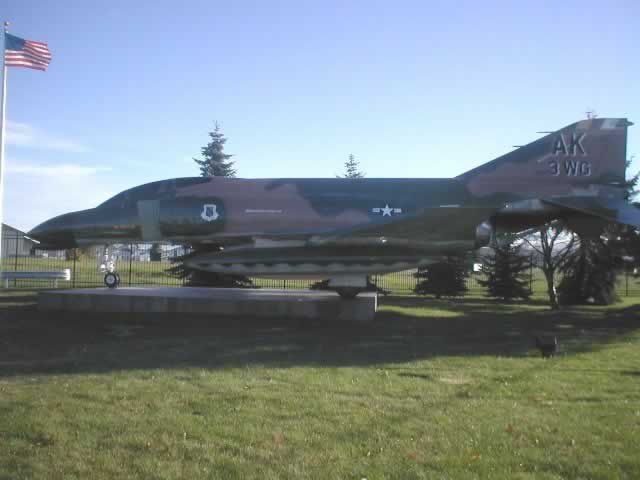 |
F-4G Phantom II at Gowen Field Air National Guard Base, Boise, Idaho (photo by Michael Hoschouer) |
 |
F-4 Phantom II 64-751, Tail Code CA, at Mountain Home Air Force Base
(photo by Michael Hoschouer) |
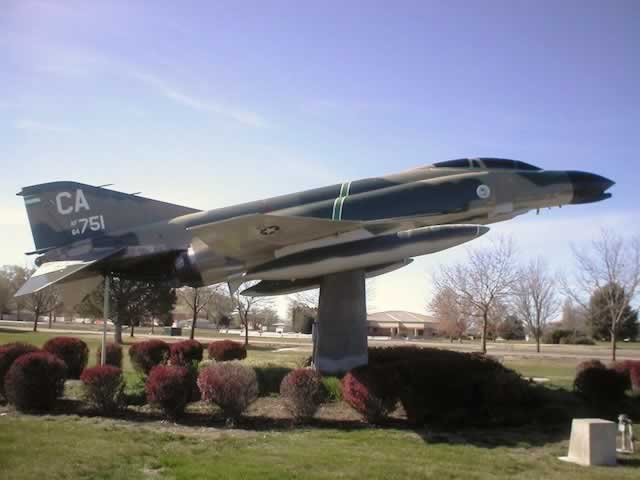 |
F-4C Phantom II, Serial Number 63-7408, at Tyndall Air Force Base, Florida
(photo by Michael Hoschouer) |
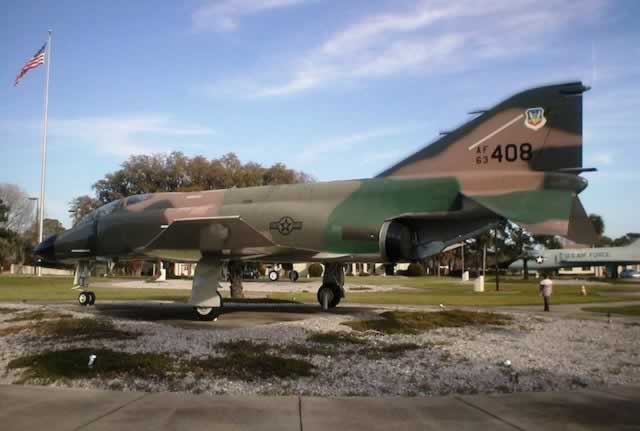 |
McDonnell Douglas F-4C Phantom II, 40-829, Tail Code FG, in the Southeast Asia War Gallery at the National Museum of the United States Air Force. Tail Code FG was assigned to the 433rd Tactical Fighter Squadron during the Vietnam War; the 433rd was part of the 8th Tactical Fighter Wing The aircraft is the one in which Col. Robin Olds, the pilot, and Lt. Stephen Croker, the weapons system officer, destroyed two MiG-17s in a single day, May 20, 1967. (U.S. Air Force photo) |
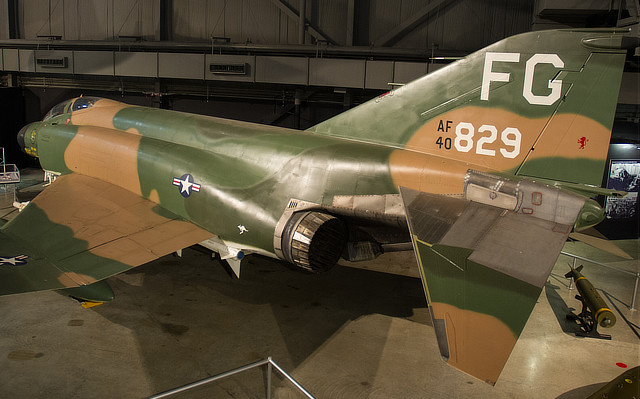 |

